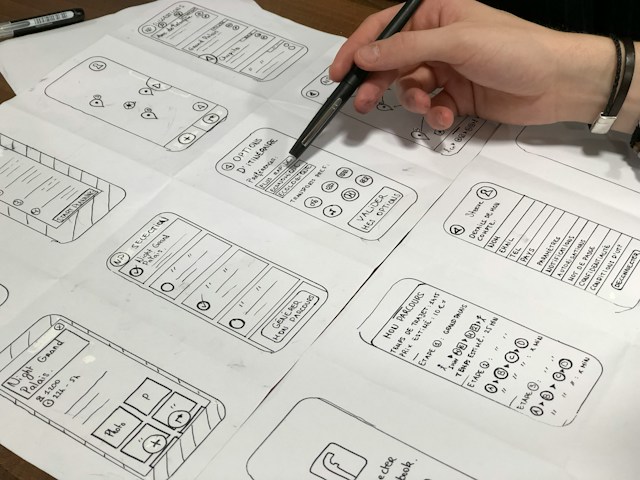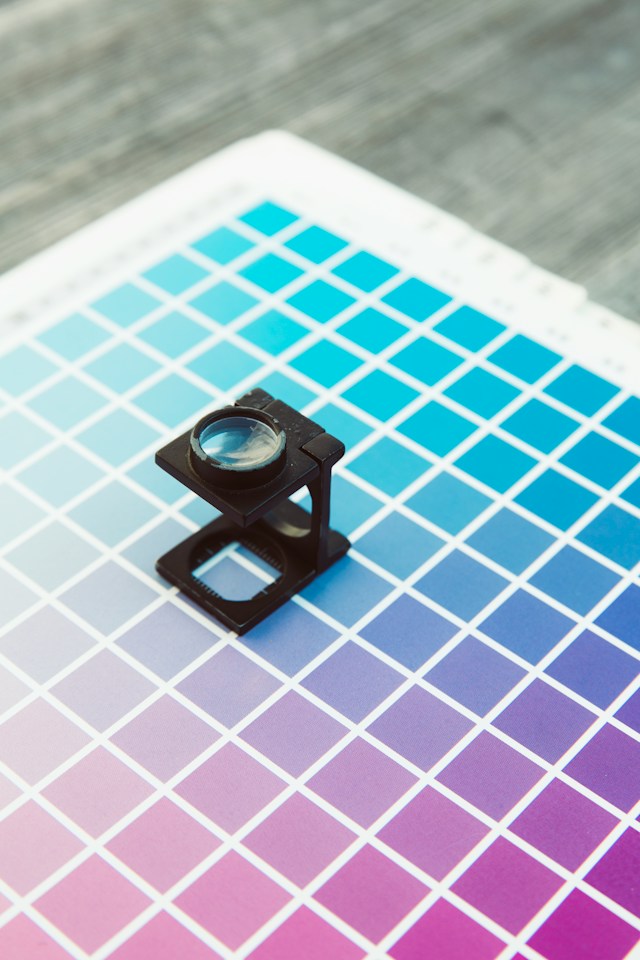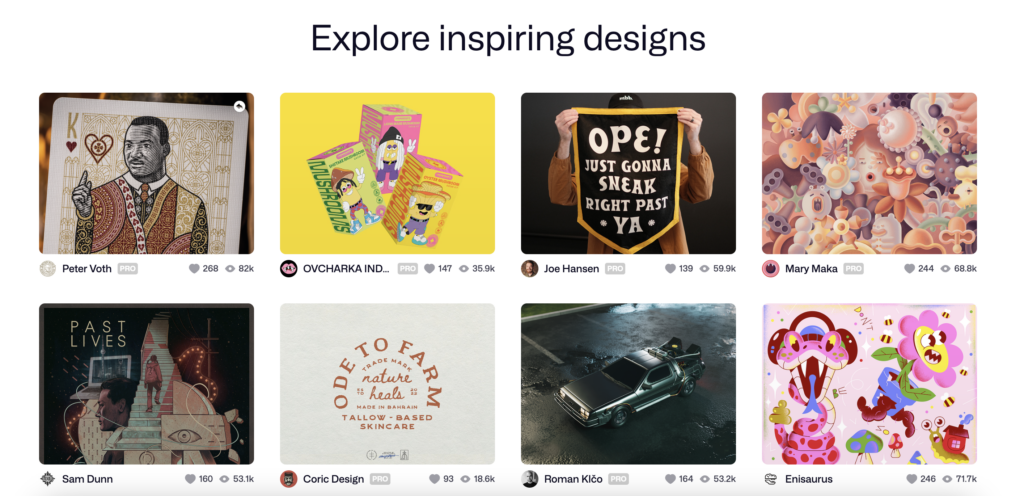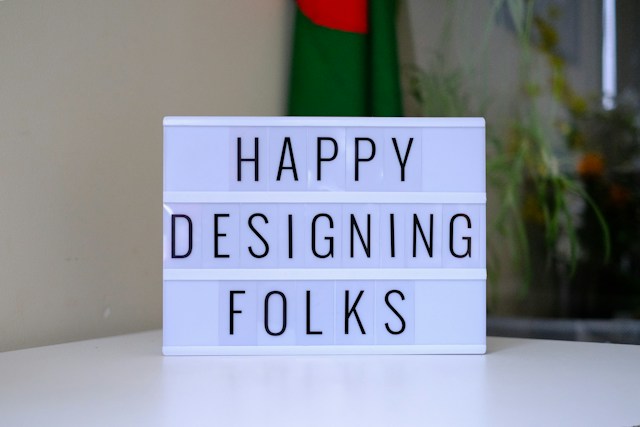Digital products that exhibit effective UI designs can make the difference between a brand’s success and a brand’s failure.
You may have thought that the optimization of the user’s experience solely relied on the work of UX designers. However, this isn’t the case. Without the marriage between captivating visual elements and functionality, your users won’t have an enjoyable experience.
For this reason, user interface designers are immeasurably crucial to the design process. Since you’re reading this article, it’s safe to say that user interface design has caught your interest.
Has that interest led you to wonder how to become a UI designer? If so, we’re here to reveal how to become not only a UI designer but a proficient, highly skilled one.
By the time you’ve finished reading our actionable guide, you’ll know what a UI designer is. You’ll also become familiar with the best methods to become one!
What Is a UI Designer?
Naturally, if you’re interested in becoming a UI designer, the first question you’ll ask is, ‘What is a UI designer?’
UI designers focus on a facet of the user’s experience known as user interface design. UI design governs the components that you use to interact with and navigate through a digital product.
Ultimately, it’s the designer’s job to optimize the appearance and interactivity of a product’s user interface.
A UI designer’s first duty is to collaborate closely with UX designers and UX researchers. In doing so, the designer will familiarize themselves with the brand and users they’re designing for. At the heart of the UX field is user-centricity, so it’s vital to have an empathetic understanding of your users.
Next, a UI designer will begin designing screen layouts, visual touchpoints, and interactive elements. Consistency is vital to exceptional UI designs, so you should expect to revisit predetermined style guides repeatedly.
Here’s a non-exhaustive list of common visual elements that these designers create, work with, and enhance:
- Spacing and proportions
- Visual patterns and hierarchies
- Responsive designs
- UI elements like buttons, sliders, checkboxes, scrollbars, etc.
- Color theory, with regard to creating unique color palettes
- Fonts and typesetting
- Interactivity
- Animations
- Style guides

How Long Does It Take To Become a UI Designer?
Given that you’ve shown an interest in UI design, it’s natural to assume that you may want to study it. If this is the case, it’s likely that you’ve asked, ‘How long does it take to become a UI designer?’
Of course, the length of time it takes will vary depending on your program.
A traditional university degree can take anywhere from three to five years. However, we recognize that juggling a lengthy study program and your other commitments can pose a challenge.
Alternatively, you have another option. As is the case in several tech-related professions, you don’t always need university-level qualifications to become a designer.
Fortunately, there are online design courses for UI and boot camps that can span anywhere between two to nine months!
How To Become a UI Designer With No Experience
Have you ever wondered how to become a UI designer with no experience? If so, your research will have shown you that it is, indeed, possible.
The question you now face is, ‘How do I go about that?’ You needn’t look any further—our step-by-step guide will answer your question.
Step One: Choosing Between UI Design and Graphic Design
Although closely related, there are differences between UI design and graphic design that could sway your decision regarding your studies.
Let’s say your interest in visual design was piqued when you saw a visually appealing brochure or brand logo. If this is the case, you’ll benefit more from studying graphic design.
Where UI design focuses on interactive visual content, graphic design focuses on creating non-interactive layouts to appeal to users.
If you strive to unify interactivity with compelling visual elements, you know that designing UI is your calling!
Step Two: Familiarizing Yourself With a UI Designer’s Skill Set
The design skills of a UI designer cover a vast array of both hard and soft skills.
Now you know that a career in UI is perfect for your own professional goals. The next step is to acquaint yourself with said skills. To help you know the skills you must acquire or refine, we’ve assembled a list of UI designers’ most valuable skills.
Hard Skills
- Wireframing.
- Prototyping.
- Responsive design (the process of ensuring your designs render well across a variety of devices/screens).
- A knowledge of how to use UI design tools.
- Interaction design (how users interact with and navigate through a product’s content).
- An understanding of how to utilize and analyze user research.
- A knowledge of how to create and use user personas.
- An understanding of basic UI design principles, including typography, color theory, and branding.
- A knowledge of how to develop and use style guides.
Soft Skills
- Collaboration
- Cooperation
- Communication (both with colleagues and test user groups)
- Empathy
- Critical thinking
- Time management
- Creativity
- Resilience
- Reflection
- Resourcefulness
By knowing what skills are needed to become successful, you’ll identify your own strengths and weaknesses. From knowing where you could improve, you can devise a study schedule that’ll refine the gaps in your knowledge.

Step Three: Paying Attention To Effective UI Design
Once you have become acquainted with a UI designer’s skillset, you should evaluate effective designs in user interface settings. In doing so, you’ll see which skills are used to create user interfaces. You’ll also see how designers apply said skills to their craft.
You should analyze your favorite mobile app or website. Look at the components that you love and the components you don’t. Evaluate how the appearance and interactivity of said components have contributed to your experience as a user.
Ask yourself why the designers have used certain UI elements in the way they have. Consider the consequences if they had used said UI elements in an alternative way. For instance, let’s say the designer has used a dark color palette. You should ponder the impact of opting for a light color palette on the user’s experience. This is critical thinking.
Once you’ve exercised your critical thinking skills, you should revisit the components you didn’t like within your chosen app/website. Ask yourself how you’d rectify those components to create a better user experience.
To find some great designs to analyze, consider the following platforms:

Step Four: Practicing With UI Design Tools
Whether you’re building professional portfolios or starting design projects, you must understand how to use typical design tools for UI.
Design tools are abundant out there. What’s more, every tool you encounter will specialize in one or more areas of UI design. You should assess as many as you can in order to find which tools work best for you.
Here are some of the most common UI design tools that you should peruse:
Step Five: Utilizing Valuable Resources
Nowadays, traditional classroom-learning methods are just one way you can learn about your chosen field. From books to YouTube videos to podcasts, there is a vast array of information awaiting you!
Books for UI design:
- Design and Digital Interfaces: Designing with Aesthetic and Ethical Awareness by Ben Stopher, John Fass, Tobias Revell, and Eva Verhoeven.
- Designing Interfaces by Jennifer Tidwell.
- The Design of Everyday Things: Revised and Expanded by Don Norman.
YouTube Channels for UI design:
Podcasts for UI design:

Step Six: Connecting With the UI Design Community
Becoming a part of a UI design community means that you’ll expand your knowledge base while attracting better career opportunities.
From finding advice to finding a mentor, a UI design community will grant you access to career-propelling expertise.
You could even reach out to like-minded designers who could help you if you’re stuck on a design problem. Most importantly, you can gain valuable feedback on your portfolio from experienced professionals.
Here are a few of the most helpful UI design communities:
Step Seven: Enrolling in a UI Design Course
Enrolling in a UI design course has several benefits to your career. Not only will you learn essential skills and knowledge, but you’ll also get to work on your own projects.
Consequently, you can add practical experience to your resume, making you a competitive candidate when you attend interviews.
With an abundance of cross-industry experience and critical design-thinking skills, you’ll find a UI design course extremely useful.
Here are some of the best UI design courses available.
Step Eight: Building Your Portfolio
A budding UI designer must have a solid portfolio to seize career opportunities. Don’t worry if you have no prior experience to put into your portfolio. If you take a UI design course, you can and should expand on the projects you started while studying.
You should treat your portfolio as if it were a narrative. Show every step of your design process and the reasoning behind every choice.
Even if you encountered issues, adding how you overcame said issues is great for your portfolio. In discussing challenges, you have the opportunity to showcase the essential skills of a UI designer.
Your portfolio is also your chance to showcase your uniqueness. So, remember to add relevant screenshots and graphics!
How To Become a Freelance UI Designer
If you’ve completed the steps in the previous section, you’re now ready to find work as a freelance UI designer.
So, how do you become a freelance UI designer?
Below, we’ve revealed precisely how you can start a rewarding career as a freelance UI designer!
Step One: Setting Up Your Business
Having a wealth of education and experience is only one facet of starting your business as a freelance UI designer.
You’ll have to handle all of the administrative factors of being self-employed. From dealing with tax returns to managing invoices, you’ll have a lot of responsibilities.
Start by creating your company’s name and build a brand identity. You can do this with logos, business cards, and websites. Next, you’ll need to set up bookkeeping software and tax management tools.
Finally, you need to decide how much to charge your customers.
Step Two: Securing Clients
Now that your business is set up, you need to choose a niche, locate your target audience, and secure clients.
Here’s how you do it!
- Develop and use a website to showcase your skills to prospective clients.
- Connect with the broader UI community. By enhancing your online presence, you will become not only more visible but also more credible.
- Peruse UI design job boards.
- Promote yourself on social media.
Step Three: Scaling Your Business
Once you have several clients and projects, you can start to expand your business.
Requesting feedback consistently will also enhance your credibility, but it’s not enough to truly expand your business.
You should also attend industry events to meet with like-minded designers and potentially attract new clients.
Remember that patience is vital when you wish to expand your business. Over time, having garnered positive feedback, you’ll see your user base extend naturally. When you have a loyal user base/substantial following, you should consider building your own design team!
How To Become a Better UI Designer
As a professional UI designer, you know that you could constantly improve. Simply put, with the emergence of new trends and data, you can never master the craft of UI.
With this in mind, here’s how to become a better UI designer.
- Research UX design.
- Design for inclusivity.
- Experiment with different design systems and tools.
- Embrace positive – and negative – feedback.
- Keep up to date with current UI design trends.
- Never stop learning more about your craft.
- Practice, practice, practice!

A Typical UI Designer Salary
According to Indeed, the average UI designer salary in the United States of America is $89,655 per year.
It’s worth noting that this is only an estimate. Realistically, you could earn anywhere between $56,937 and $141,173 per year.
Remember that your annual salary will depend on your location, the size of your company, your experience, and your qualifications.
How To Become a UI Designer: Learning How To Create Intuitive User Interfaces
The key takeaway from this guide is that the success of a UI designer relies solely on the user’s experience. Now that you know how to create an exceptional user experience, it’s time to start with some immeasurably valuable inspiration.
Consider Page Flows. With over 4,200 recordings of tried and tested products, our user flows demonstrate our keen eye for simple fluidity.
We’ll provide you with a knowledge base that’ll guide you as you see how successful products optimize the user’s experience! Specifically, we collect emails when we record user flows. As a result, you’ll learn how to interact with your users as they interact with your products! Needless to say, this knowledge is extremely valuable when expanding your business.
From ASOS to Amazon, we offer an abundance of user flow inspiration! You now know how to become a UI designer; the power is now in your hands.
Get started today to access our growing library of user flow recordings and finally stay up-to-date with current design trends.





